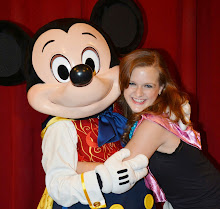How the Disney Brand Can Make Kids Cry...in a Good Way
This video of 6 year old Lily went viral in 2011 when her reaction to a trip to Disneyland was anything but smiles. Take a look:
Lily is the poster child for how powerful the Disney brand has become, ingulphing American society and our children's lives. Somehow, the brands characters, message, and experiences Disney offers seems to touch us emotionally. And in Lily's case, sometimes beyond a level that would rationally be accepted.
Robert Health, author of "Seducing the Subconscious" explains that our emotions happen on a subconscious level, meaning they are triggered without our understanding. Emotions are neurobiological predisposition that we all have to outside stimuli. Heath discovered that emotive stimuli are most powerful when we are only vaguely aware or not conscious at all. The process can easily be explained in this way:
Stimulus----> Analyzation (subconscious)---->Appraisal (subconscious)----->TRIGGER (creation of emotion)----->Execution of Emotion (where feelings are developed) (consciously).
What does this all have to do with the Disney Brand?
The video of Lily's reaction to receiving her 6th birthday gift to Disneyland documented a moment of how we have been emotionally conditioned to associate feelings of joy, happiness, and magic with the Disney brand, creating a powerful emotion, then a feeling, which is then expressed behaviorally, as Lily's crying demonstrates. We have all seen countless videos of surprise and joy from children and adults alike who get a surprise trip to a Disney Theme Park and in almost all of them an extreme behavior is expressed (screaming, dancing, smiling, and even crying).
But what is so fascinating is that Lily, only 6 years old, has been so strongly emotionally conditioned by her previous exposure to the Disney brand through toys, tv, movies, and even word of mouth from other peers, understanding Disney as a "fairytale, dream-come-true, fun, etc., that she already has a strongly established neurological connections to the brand. Her unconscious emotional conditioning to the brand has allowed her to subconsciously associate the "Disney qualities" with the future experience of going to Disneyland.
In "Seducing the Subconscious", Heath uses an example of how Cottennelles signature "Yellow Lab" has emotionally conditioned us to associate qualities of the Labrador retriever (friendliness, family symbol, companionship) with the brand, causing use to subconsciously choose the brand based on just these emotions we produce.
Disney, has done the same. Companies now view co-branding with Disney as the epitomy of a smart marketing move. If companies can simply slap the signature "Disney" logo on their products, consumers subconsciously associate the co-branding company's product as having those Disney qualities (magic, fun, happiness, safety, etc). Disney has recognized the power of what their brand subconsciously means to consumers and now holds strict licensing agreements with companies who want to use their logo or franchises.
By keeping a tight harness on what co-branding agreements exist and how companies are allowed to use the Disney brand, Disney's goal is to make sure that no matter where they are represented their brand consistently causes the same emotions to be subconsciously recognized by the consumer.
This is the Disney magic. Lily's reaction shows us that although she hasn't even been to the park, she still understands what the brand stands for and her brain taps a neurological connection to the emotions that the brand is supposed to trigger.
WAY TO GO DISNEY!
References:
KAftC. October 3, 2011. Lily's Disneyland Surprise. Retrieved
from: https://www.youtube.com/watch?v=OOpOhlGiRTM
Heath, R. (2012). Seducing the subconscious. West Sussex, UK: Wiley-Blackwell.

No comments:
Post a Comment